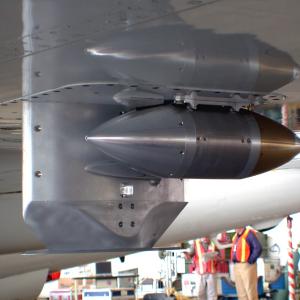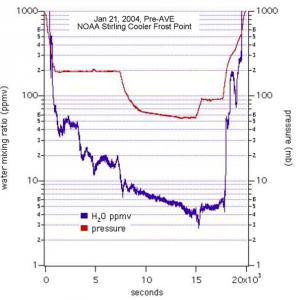Primary tabs
Disclaimer: This material is being kept online for historical purposes. Though accurate at the time of publication, it is no longer being updated. The page may contain broken links or outdated information, and parts may not function in current web browsers. Visit https://espo.nasa.gov for information about our current projects.
Frost Point (NOAA) (FP)
The NOAA frost point instrument was designed to run unattended under the wing of NASA’s WB-57. An aircraft rated Stirling cooler provides cooling to 100 K. The cooler avoids consumables and provides a large temperature gradient that improves the response time. The vertical pylon houses the optics and provides aerodynamic pumping of the sample volume. At the bottom of the pylon there is a boundary layer plate and a vertical inlet that separates particles larger than 0.2 microns from the sampled air. There are two channels that use blue LEDs and scattered light to detect frost on the mirrors. Diamond mirrors are used for low thermal mass and high conductivity. The two channels are to be used to understand frost characteristics under flight conditions. High flow rates are used to decrease the shear boundary layer to facilitate diffusion through the boundary layer to the mirrors.


